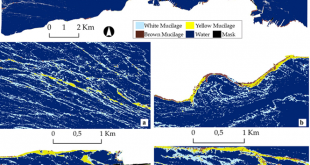Advances Water Resources, 97, 251-265. (2016)
Scour Patterns Around Isolated Vegetation Elements
Yagci O., Celik F., Kitsikoudis V., Kirca V.S.O., Hodoglu C., Valyrakis M., Duran Z., Kaya S.
Abstract: The complex multi-directional interactions between hydrological, biological and fluvial processes govern the formation and evolution of river landscapes. In this context, as key geomorphological agents, riparian trees are particularly important in trapping sediment and constructing distinct landforms, which subsequently evolve to larger ones. The primary objective of this paper is to experimentally investigate the scour/deposition patterns around different forms of individual vegetation elements. Flume experiments were conducted in which the scour patterns around different representative forms of individual in-stream obstructions (solid cylinder, hexagonal array of circular cylinders, several forms of emergent and submerged vegetation) were monitored by means of a high-resolution laser scanner. The three dimensional scour geometry around the simulated vegetation elements was quantified and discussed based on the introduced dimensionless morphometric characteristics. The findings reveal that the intact vegetation forms generated two elongated scour holes at the downstream with a pronounced ridge. For the impermeable form of the plant, the scour got localized, more deposition was detected within the monitoring zone, and the distance between the obstruction and deposition zone became shorter. It is also shown that with the effect of bending and the subsequent decrease of the projected area of the plant and the increase of bulk volume, the characteristic scour values decrease compared to the intact version, and the scour zone obtains a more elongated form and expands in the downstream direction.

Available Online: https://www.sciencedirect.com/science/article/pii/S0309170816305115
 UHUZAM İTÜ – Uydu Haberleşme ve Uzaktan Algılama UYG-AR Merkezi
UHUZAM İTÜ – Uydu Haberleşme ve Uzaktan Algılama UYG-AR Merkezi 